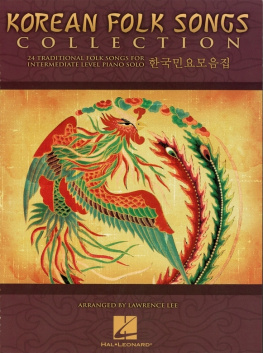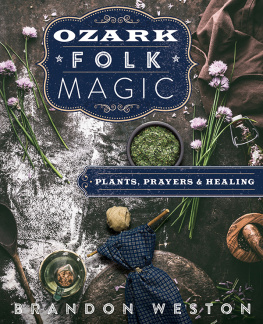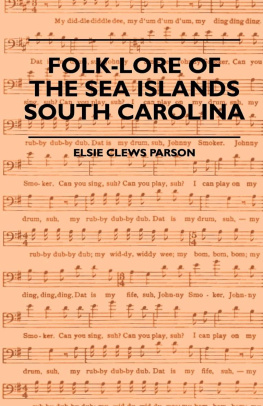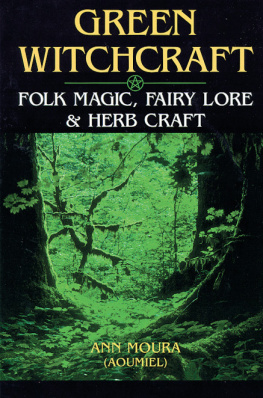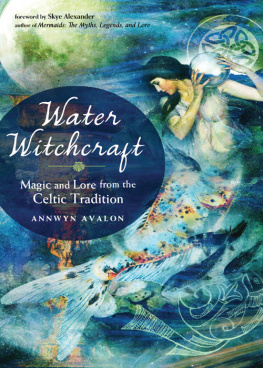THE MAGIC OF THE HORSE-SHOE
ARMS OF THE TOWN OF OAKHAM, RUTLANDSHIRE, ENGLAND.
[From an Old Engraving.]
THE
MAGIC OF THE HORSE-SHOE
With Other Folk-Lore Notes
BY
ROBERT MEANS LAWRENCE, M. D.
Imprimatur of the Riverside Press
BOSTON AND NEW YORK
HOUGHTON, MIFFLIN AND COMPANY
The Riverside Press, Cambridge
1898
COPYRIGHT, 1898, BY ROBERT MEANS LAWRENCE.
ALL RIGHTS RESERVED.
PREFACE
The study of the origin and history of popular customs and beliefs affords an insight, otherwise unattainable, into the operations of the human mind in early times. Superstitions, however trivial in themselves, relics of paganism though they be, and oftentimes comparable to baneful weeds, are now considered proper subjects for scientific research. While the ignorant savage is a slave to many superstitious fancies which dominate his every action, the educated man strives to be free from such a bondage, yet recognizes as profitable the study of those same beliefs. The heterogeneous character of the material drawn from so many sources has rendered it difficult, if not impossible, to follow any distinctly systematic treatment of the subject. However, the development in recent years of a widespread interest in all branches of folk-lore warrants the hope that any volume devoted to this subject, and representing somewhat diligent research, may have a certain value, in spite of its imperfections. The expert folk-lorist may find much to criticise; but this book, treating of popular beliefs, is intended for popular reading. It has been the writers aim to make the chapter on the Horse-Shoe as exhaustive as possible, as this attractive symbol of superstition does not appear to have received hitherto the attention which it merits. This chapter is the outgrowth of a paper read at the seventh annual meeting of the American Folk-Lore Society, at Philadelphia, December 28, 1895, an abstract of which appeared in the Societys Journal for December, 1896.
Extended quotations are indicated by smaller type.
R. M. L.
Boston , September 1, 1898.
THE MAGIC OF THE HORSE-SHOE
And still oer many a neighboring door
She saw the horse-shoes curvd charm.
Whittier , The Witchs Daughter.
Happy art thou, as if every day thou hadst picked up a horse-shoe.
Longfellow , Evangeline.
I. HISTORY OF THE HORSE-SHOE
The evolution of the modern horse-shoe from the primitive foot-gear for draught animals used in ancient times furnishes an interesting subject for investigation. Xenophon and other historians recommended various processes for hardening and strengthening the hoofs of horses and mules, and in an ancient Finnish incantation against the plague, quoted in Lenormants Chaldean Magic and Sorcery, occur these lines:
O Scourge depart; Plague, take thy flight I will give thee a horse with which to escape, whose shoes shall not slide on ice, nor whose feet slip on the rocks.
No allusion to the horse-shoe is made by early writers on veterinary topics. But, on the other hand, there is abundant testimony that the ancients did sometimes protect the feet of their beasts of burden. Winckelmann, the Prussian art historian, describes an antique engraved stone representing a man holding up a horses foot, while an assistant, kneeling, fastens on a shoe.
Iron horse-shoes of peculiar form, which have been exhumed in Great Britain of recent years, have been objects of much interest to archologists. In 1878 a number of such relics shaped for the hoof and pierced for nails were found at a place called Csars Camp, near Folkstone, England.
On the gate of Oakham Castle, an ancient Norman mansion in Rutlandshire, built by Wakelin de Ferrars, son of the first earl of that name, were formerly to be seen a number of horse-shoes of different patterns.
The estate is famous on account of the tenure of the barons occupying it. Every nobleman who journeyed through its precincts was obliged as an act of homage to forfeit a shoe of the horse whereon he rode, or else to redeem it with a sum of money; and the horse-shoes thus obtained were nailed upon the gate, but are now within on the walls of the castle.
These walls are covered by memorials of royal personages and peers, who have thus paid tribute to the custom of the county.
Queen Elizabeth was thought to have initiated this practice, though this opinion is incorrect. According to tradition she was once journeying on a visit to her lord high treasurer, William Cecil, the well-known Lord Burleigh, at his residence near Stamford. While passing through Oakham her horse is said to have cast a shoe, and in memory of the mishap the queen ordered a large iron shoe to be made and hung up in the castle, and that every nobleman traveling through the town should follow her example.
A similar usage prevails to-day, new shoes being provided of shapes and sizes chosen by the donors.
While John of Gaunt (1339-99), son of Edward III. of England, was riding through the town of Lancaster, his horse cast a shoe, which was kept as a souvenir by the townspeople, and fastened in the middle of the street. And in accordance with a time-honored
The practical value of the horse-shoe is tersely expressed in the old German saying, A nail preserves a country; for the nail keeps in place the horse-shoe, the shoe protects the foot of the horse, the horse carries the knight, the knight holds the castle, and the castle defends the country.
The following story from Grimms Household Tales (vol. ii. p. 303) may be appropriate in this place, as illustrating the same idea, besides pointing a moral.
The Nail.
A merchant had done a good business at the fair; he had sold his wares and lined his money-bags with gold and silver. Then he wanted to travel homeward and be in his house before nightfall. So he packed his trunk with the money on his horse and rode away. At noon he rested in a town, and when he wanted to go farther the stable-boy brought out his horse and said: A nail is wanting, sir, in the shoe of its left hind foot. Let it be wanting, answered the merchant; the shoe will certainly stay on for the six miles I have still to go; I am in a hurry. In the afternoon, when he once more alighted and had his horse fed, the stable-boy went to him and said, Sir, a shoe is missing from your horses left hind foot; shall I take him to the blacksmith? Let it still be wanting, answered the man, the horse can very well hold out for the couple of miles which remain; I am in haste. He rode forth, but before long the horse began to limp. It had not limped long before it began to stumble, and it had not stumbled long before it fell down and broke its leg. The merchant was forced to leave the horse where it was, and unbuckle the trunk, take it on his back, and go home on foot. And there he did not arrive until quite late at night. And that unlucky nail, said he to himself, has caused all this disaster. Hasten slowly.
II. THE HORSE-SHOE AS A SAFEGUARD



